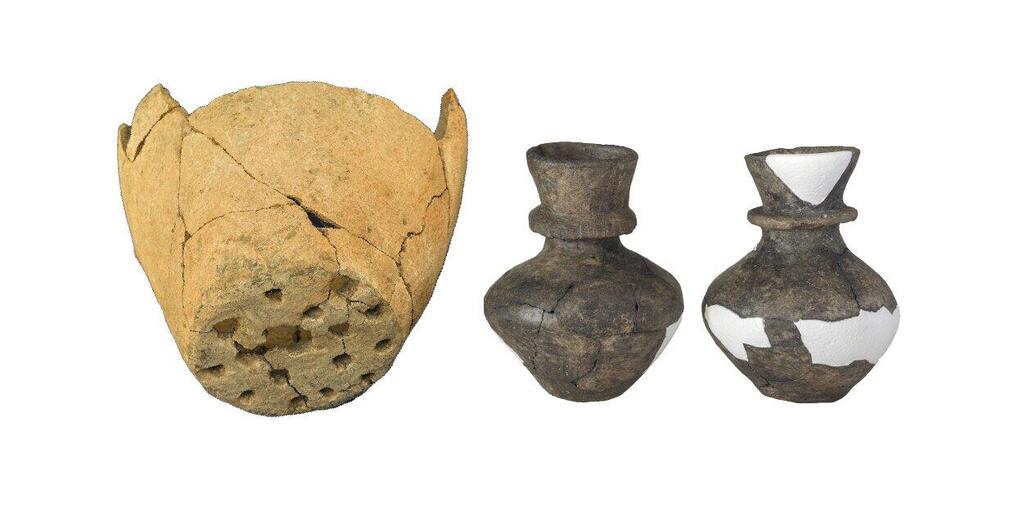Examination of Neolithic-age pottery in a Polish excavation site helps shed light on how dairy products from cows, goats and sheep were made 9,000 years ago.
Lactose intolerance was common among Europeans at the dawn of the Neolithic age, circa 7,000 BC, up until the late Bronze age, around 4,500 BC, as a genetic mutation spread, helping adults create the enzyme required to break down lactose in their digestive system.
1 View gallery


Neolithic ceramics identified with high curd-content residues, indicating multiple dairy animals were used
(Photo: University of York)
A study published in the peer-reviewed Royal Society Open Science journal examined the practical aspect of processing milk in the late Neolithic age, and discovered different kinds of dairy residue in pottery bowls, indicating they were produced from different types of livestock.
Dr. Harry Robson, who was among the researchers, said: "Whilst previous research has shown that dairy products were widely available in some European regions during this period, here, for the first time, we have clear evidence for a diversified dairy herd, including cattle, sheep and goats, from the analysis of ceramics.”
Lead author, Miranda Evans, a Ph.D. student at Cambridge’s Department of Archaeology, said: “The proteomic results showed that the ancient residues closely resembled both the modern cheesemaking residues and cheese itself and not whole milk. This reveals that the people of Sławęcinek, in central Poland, practiced cheesemaking or another form of curd-enriching dairy processing. Evidence of multiple species used for cheesemaking was backed up by the presence of both cow and sheep or goat bones on the site.”

